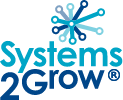
So, where do I start…
Training is essential and you need a great trainer.
Without a good trainer showing your teams how to do tasks your way and within your set of values, your support officers will set themselves up for failure.
You need training:
- At induction or onboarding.
- To remind the team how things are done. Usually, one round of training is not enough.
- When things go wrong.
- When new stuff is introduced.
- To give the team a platform they all understand and do the same way together.
The list goes on.
But I meet trainers all the time who are great at their job and they want to train only according to their system.
Good or not so good?
Well, if you have been watching me for a while now, you will know that I believe information on how to do a job should only be given to your teams in one place – that is there is only one point of truth.
Easy to say but sometimes not so easy to do.
And where you have training manuals and operations manuals together covering the same material, I know there will be a tendency to duplicate procedures because it seems to be easer – especially for trainers who will have their own one point of truth set out in their own system.
Experience tells me this is not so great for your teams.
And it certainly isn’t so great for your organisation because it sets your team up to ignore conflicting advice which means your operations manuals will be ignored and everyone will just get on with the job their own way. A recipe for disaster.
I haven’t yet got to fisty-cuffs with trainers but close. Because I firmly believe the only way round this is for your training manuals and your operations manuals to be set up to use each other.
Operations manuals set out how you want a job done. Procedures specify why and how. This includes your specifications on some of the most contentious issues – customer service, business operations, sales. This is because every business has their own style.
Training manuals show how the job is to be done based on the procedures in the operations manuals. They simply outline the training processes to be followed. For example:
- Send a set of operations manual procedures for the next set of training to team members for them to check out the videos and text/image instructions. Contemporary operations software will perform like a LMS so you can see if the team members have looked at the documentation.
- Call the team in for face-to-face teaching such as role play etc. based on the information they have checked out.
- Let the team do the job under supervision.
- Then let them go to do the job in real time but keep an eye on performance and pull in for repeat training if required.
This way the training system references the procedures in your operations manuals with two benefits.
- Your team are taught how to do the job your way.
- They are also taught how to use the operations manuals making sure there are no excused when they forget how to do the job – they will know where to go to get the reminder.
Of course, there are exceptions but take care.
DON’T let your trainers hijack your processes. Make them reference your operations, not theirs, so you get the best out of your team in the long term.


